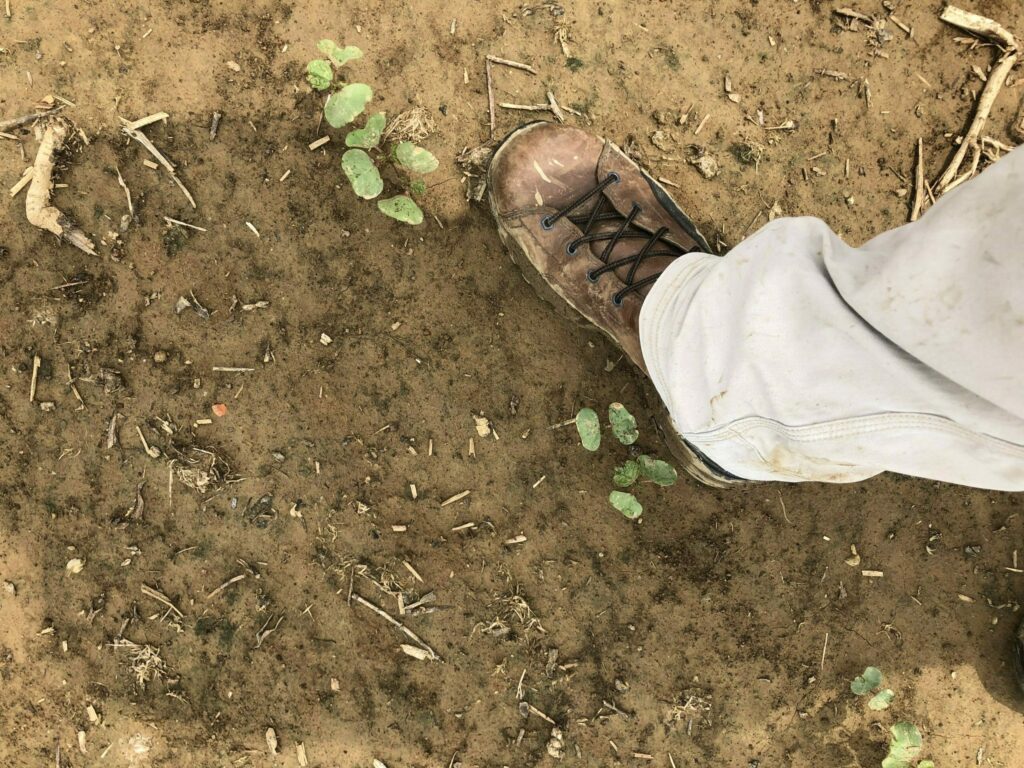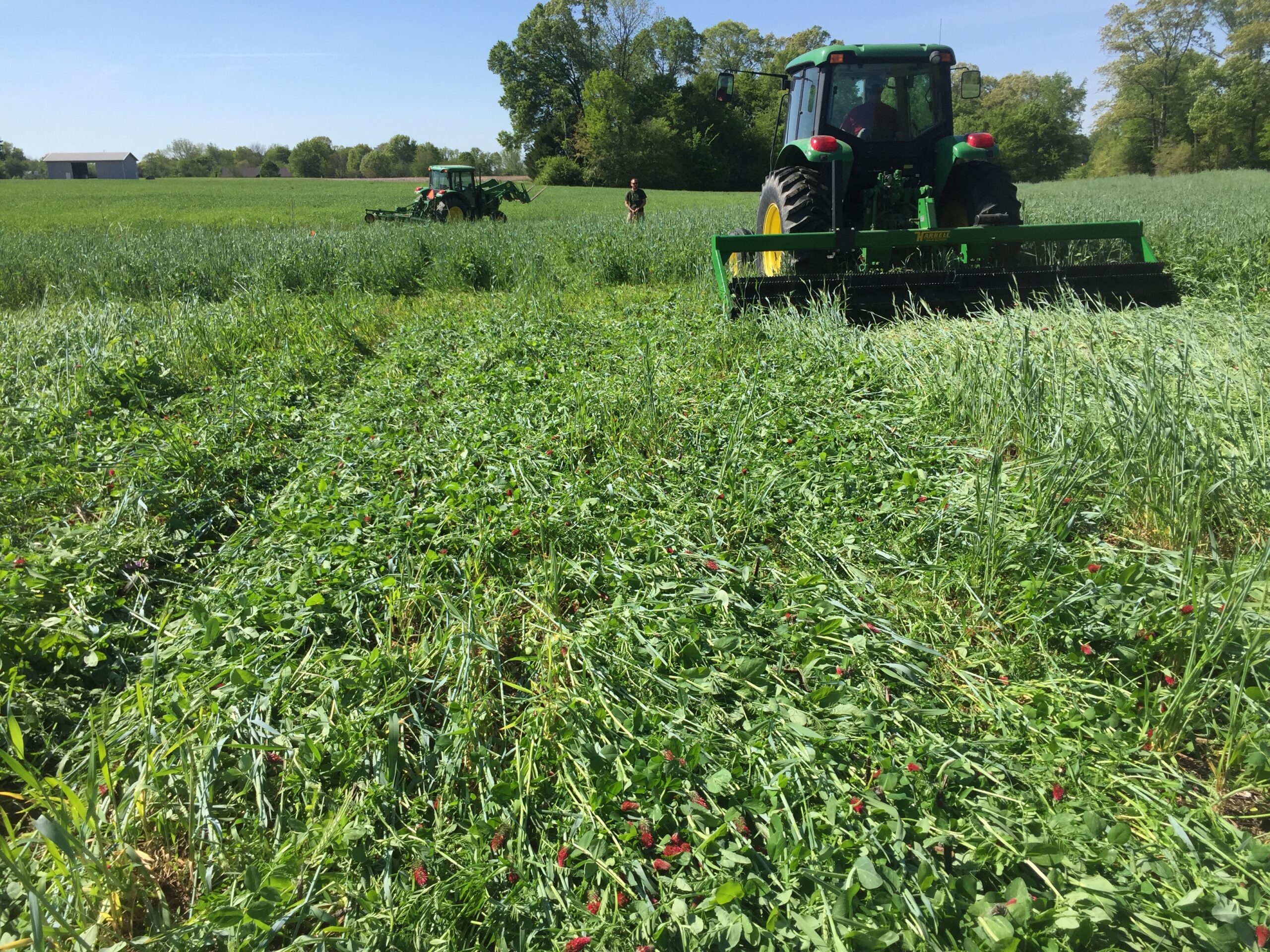 Large rainfall events and cool weather in late May strained Tennessee’s cotton crop. In some areas, individuals are considering replanting cotton that failed to emerge or cotton that appears to be just sitting. In other areas, reports of damaged or desiccated cotyledons have been reported and healthy, large cotyledons are hard to find most anywhere. In this blog, I cover a few rules of thumb to consider when determining whether or not to keep the stand and give a few words of advice to those that are considering May 30-something cotton. Continue reading
Large rainfall events and cool weather in late May strained Tennessee’s cotton crop. In some areas, individuals are considering replanting cotton that failed to emerge or cotton that appears to be just sitting. In other areas, reports of damaged or desiccated cotyledons have been reported and healthy, large cotyledons are hard to find most anywhere. In this blog, I cover a few rules of thumb to consider when determining whether or not to keep the stand and give a few words of advice to those that are considering May 30-something cotton. Continue reading
Category Archives: Fertility
UT Cotton Scout School
The UT Cotton Scout School is scheduled for the last Friday of the month, May 27th, at the West Tennessee Research and Education Center (605 Airways Blvd, Jackson). There is no fee, and preregistration is not required. Registration begins at 8:00 AM with the program starting at 8:30. Content will include classroom and hands-on training with an optional go-to-the-field session after lunch. Topics covered will include cotton development and identification and symptoms of insect pests, plant diseases, and weeds.
UT Cotton Scout School (Friday, May 27, 2022)
The UT Cotton Scout School is scheduled for the last Friday of the month, May 27th, at the West Tennessee Research and Education Center (605 Airways Blvd, Jackson). There is no fee, and preregistration is not required. Registration begins at 8:00 AM with the program starting at 8:30. Content will include classroom and hands-on training with an optional go-to-the-field session after lunch. Topics covered will include cotton development and identification and symptoms of insect pests, plant diseases, and weeds.
Management Practices to Optimize Nitrogen Fertilizer Use with High Fertilizer Prices
Nitrogen (N) fertilizers may be a limiting factor for corn production based on rising N fertilizer prices and other production input. There are a few things to consider with high N fertilizer prices: (a) apply N fertilizer at the right time, (2) add or treat urea-based fertilizers with a proven N stabilizer, and (3) apply the N fertilizer at the appropriate N rate.
Apply N fertilizer at the right time
Preplant N application in corn is not recommended in Tennessee because of the length of time from application to when the corn plant will begin significant N uptake. One exception is the application of anhydrous ammonia with properly calibrated equipment. Corn plants take up little N (<12% of N uptake during the growing season) until V6 growth stage, with the most active period of N uptake occurring between V8 to V14. Hence, there is a greater risk for N loss via ammonia volatilization or nitrate leaching from preplant N. Split application is recommended when N rates are greater than 120 lb N/A. A typical split management practice is to apply a third of the total intended N per acre at planting and sidedress the remaining N fertilizer between V4 to V6. Split application also provides flexibility to adjusting N rate during growing season as compared to just a single application at planting. Split-application of a third of the recommended N at planting and sidedress the remaining N fertilizer provides greater yield than single application at planting (Figure Below-average across six trials). Continue reading
Integrating Cover Crops in Nitrogen Management
 Cover crops can supply nitrogen (N) to the soil for the subsequent cash crops and this nitrogen credit may be successfully integrated into N management. The challenging question is how much of the N supplied by cover crops is available for the next cash crop. Unfortunately, there is not a simple answer to this question since several factors influence the N availability from cover crops. There are two primary considerations if the goal of planting cover crops is to contribute N to the soil: the proportion of species in cover stand and the timing of cover crop termination.
Cover crops can supply nitrogen (N) to the soil for the subsequent cash crops and this nitrogen credit may be successfully integrated into N management. The challenging question is how much of the N supplied by cover crops is available for the next cash crop. Unfortunately, there is not a simple answer to this question since several factors influence the N availability from cover crops. There are two primary considerations if the goal of planting cover crops is to contribute N to the soil: the proportion of species in cover stand and the timing of cover crop termination.
The proportion of species in the established cover stand is important because different species have different effects on N. Depending on the species of cover crop planted, soil N may be removed or supplied to the soil. Grass cover crops (e.g. cereal rye, annual rye, wheat, oats), which are referred to as “scavengers” take up nitrates from either residual N fertilizers or organic matter decomposition. So, grasses do not contribute a whole lot to the soil N since not all of the scavenged N is available for the next growing season. An established cover stand comprised of all or mostly grasses will not provide any significant N benefit. Hence, the recommended N rate for the cash crop should not be reduced. In contrast, legumes (e.g. clover, winter pea, hairy vetch) supply additional soil N through biological N fixation. A well-established legume cover crop stand would supply sufficient N to warrant reducing the recommended N rate. UT currently recommends a 60 to 80 lb N credit for a well established legume cover crop that has reached early bloom.
Generally, most growers plant multispecies of cover crops with less than 50% of biomass being a legume. Since legumes supply N, a good percentage of legume in cover stands is required to maximize plant available N for the next cash crop. A study in TN has shown that 30% legume biomass in cover stands can supply up to 43 pounds of N per acre when terminated late. It is critical to evaluate a stand of mixed species cover crops to determine actual legume proportion if some N credit is desired.
The second consideration is the timing of cover crop termination. There is a thin line between growing cover for extended periods to maximize plant available nitrogen (PAN) and yield loss of the cash crop. Generally, if the goal is to maximize PAN from a well-established legume stand, late termination may be a preferred choice. It is worth pointing out that late termination would result in delayed planting and increase the potential for yield loss of cash crops such as corn. If the legume is terminated early, those plants are smaller and have less time to fix N which can be released back into the soil. In contrast, well-established grass stands must be terminated early, especially if growing a cash crop with high N demand (e.g. corn). This strategy will not necessarily supply N but, rather prevent N from being tied up in the soil.
In summary, unique challenges presented by rising N fertilizer costs may present opportunities to rely on cover crops to meet some N need for the next cash crop. However, to integrate cover crops in N management, the cover crop should consist of at least 30% of established legume in the cover crop stand and should be terminated at early bloom. Currently, UT only recommends a N credit of 60-80 pounds per acre of plant available N following a single species well-established legume cover crop that has reached early bloom.
UT Fertilizer Recommendations for Optimal Corn Productivity
This is part one of a series of blog articles that will focus on some fundamental information on UT fertilizer recommendations for corn. Commonly recommended nutrients for use in corn production in TN include nitrogen (N), phosphorus (P), potassium (K), sulfur (S), and zinc (Zn). Each nutrient will be discussed in terms of the relevant soil test that maybe used or used in recommendation; recommended preplant, starter, sidedress, and foliar fertilizer applications; and plant/tissue analysis. To ensure simplicity and better assimilation of the voluminous information, each nutrient will be featured on a different day of this week. Today’s focus will be on nitrogen (N).
UT nitrogen (N) fertilizer recommendations for optimal corn productivity
Today’s blog will focus on UT nitrogen recommendations for optimal corn productivity under conditions in TN. Nitrogen is a major component of chlorophyll (the green pigment), that is essential for photosynthesis. Hence, its deficiency tends to cause chlorosis. In addition, inadequate supply of N at critical growth stage can reduce ear size and lead to yield loss.
Soil test for nitrogen
Plants use N in the nitrate (NO3–) and ammonium (NH4+) forms. However, ammonium levels are generally very low in upland soils so soil nitrate tests are used to measure plant available N and adjust N fertilizer applications for corn. There are two commonly used soil nitrate tests used in the US, the Pre-Plant Nitrate Test (PPNT) and Pre-Sidedress Nitrate Test (PSNT). Soil samples for PPNT is collected prior to preplant N application while PSNT are collected prior to pre-sidedress application.
In TN, only the Pre-sidedress Soil Nitrate Test (PSNT) is recommended for corn production, particularly for producers using animal manure such as poultry litter. Detailed information on sample collection and processing procedure are described in the UT Publication, The Pre-Sidedress Nitrate-N Soil Test (PSNT) For Nitrogen Management in Corn Production Systems of Tennessee. Interpretation of the PSNT in Tennessee is made based on yield potential of the field, soil test level, and field history.
In TN, current N application rate for corn production is based on yield goal. However, adjustment can be made based on past production records and PSNT if applicable. Another tool available for estimating corn N rate is the Nitrogen Rate Calculator at www.utcrops.com.
The New UTcrops.com !!!
 If you haven’t noticed, our UTcrops.com website has gotten a facelift. You may not recognize it when you first visit us at https://utcrops.com/. However, it’s organized similarly to the old version. I’m sure there are a few bugs that need to be fixed, but take a look! This site gives you ready access to essentially all UT resources related to row crop production.
If you haven’t noticed, our UTcrops.com website has gotten a facelift. You may not recognize it when you first visit us at https://utcrops.com/. However, it’s organized similarly to the old version. I’m sure there are a few bugs that need to be fixed, but take a look! This site gives you ready access to essentially all UT resources related to row crop production.
Virtual Training: Soil sampling and testing considerations for optimum crop yield
I will be hosting pre-recorded virtual training “Soil sampling and testing considerations for optimum crop yield”. Presentation will focus on two of the cardinal steps in soil testing; soil sampling and fertilizer recommendation. The pre-recorded video will be posted on UT Crops YouTube Channel. Participants will have access to the recorded presentation on Friday (10/23) at 9:00 am. In order to get points for CEU, complete the quiz and provide your contact information here.


